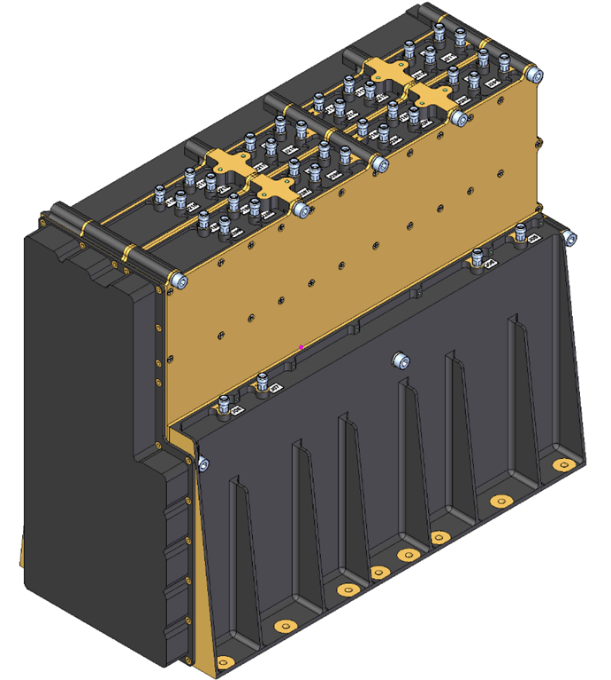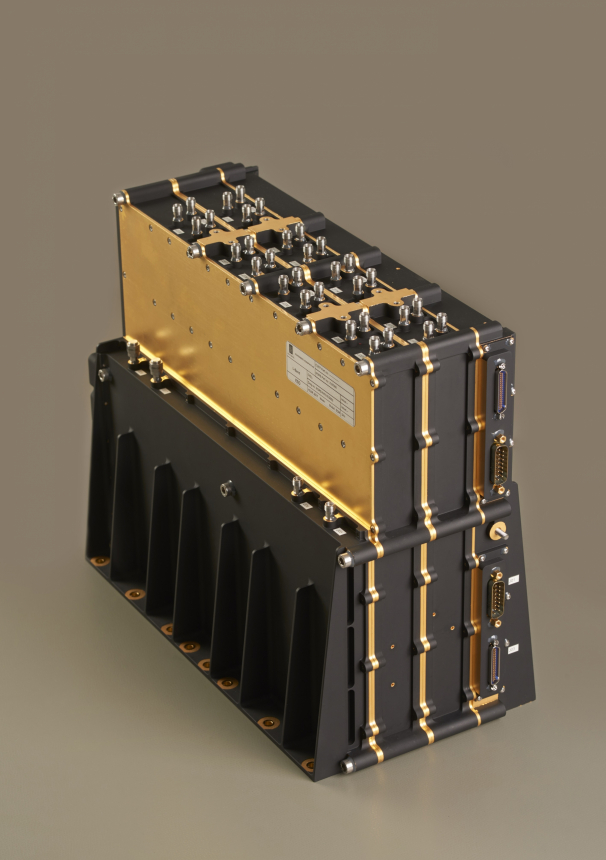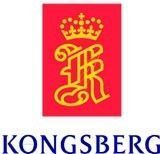-
StatusCompleted
-
Status date2018-06-01
-
Activity Code5C.324
The strategic and commercial objective for this development is targeted frequency converter equipment for GEO Mobile systems for L & S-band On-board Digital Beam-forming systems. Such system typical have 130-150 frequency converters between the antenna and the DSP. The frequency converters are often named Pre-processors and Post-processors.
In the program one EQM combining the Pre and Post Processor has been designed, developed and successfully qualified.
In addition to the performance and technological challenges in the program, a major task for this program has been also to develop an organization tailored to the industrial activity. The challenge is to be able to handle a large HW quantity needed for such programs in an efficient way within short time periods
The key issue in this program has been the design, development and qualification of an EQM suitable for pre & post processing (frequency conversion) for digital beam forming L-& S-band mobile services satellites.
Design Challenges
The design challenges is to perform frequency conversion and filtering in multiple channels without jeopardizing the antenna element phase tracking.
Industrial Organization
In addition to the design challenges, there has been a challenge to prepare an industrial organization able to develop, manufacture and test a large amount of critical hardware in a short time period.
The development will target one EQM unit combining the pre- and post processor functionality. It is designed to fit onto a customer specific architecture for frequency conversion before and after the DSP. The specific EQM is targeted the first flight opportunity, yet the design principles can be applied for other L-band systems, as well as at S-Band
The EQM is a multipack assembly with 20 converters in four times 5:4 redundancy, including LO generation and TMTC/DCDC. The EQM developed is a combination of a pre- and post-processor unit. One of two converter slices in the unit contains 10 down converter chains and the other slice contains 10 up converter chains. For later flight implementations the unit will be either a pre- or a post-processor.
The key features for the Pre-Processor can be summarized as follows:
- Take the uplink band at L-Band or S-Band, and frequency convert to specific slots at IF.
- Make the spectrum sufficiently clean before A/D conversion
- Convert with an insertion phase stability (channel phase & LO), to different frequencies, such that antenna element phase tracking is not jeopardized
- Perform redundancy management
The key features for the Post-Processor can be summarized as follows:
- Perform frequency conversion of the IF signal to L-Band or S-band.
- Remove all unwanted signals (other Nyquist zones, neighbour element signals)
- Convert to transmit frequency, from different frequencies, such that antenna element phase tracking is not jeopardized
- Manage redundancy
The Pre-Processor provides frequency conversion of the L-band uplink frequency down to IF, while the Post-Processor provides frequency conversion from IF up to the L-band downlink frequency. Each processor unit contains 20 identical frequency converter chains of which 16 are active. The converter chain includes channel filtering by means of SAW filter and individual gain setting via tele-command.
The Pre- and Post-Processors make part of a beam forming system thus, in addition to frequency conversion and channelization parameters, critical performance parameters are gain and phase tracking both between the internal converter chains and between the converter types.
Both processors employ spectral inversion and the internal LO frequencies are generated as an integer multiple of the input MRO signal (around 10MHz).
The Pre- and Post-Processor assemblies are very similar units even though one provides frequency up-conversion while the other provides down-conversion. The two converter units thus opens for a high degree of reuse with respect to designs, parts and even slices. Key parts like hybrids, technologies and assemblies are common.
This has been a key element to provide an efficient design that is suited for manufacturing of a large amount of critical hardware in a short time period.


The following development plan has been followed during the program:
PDR – Preliminary Design Review
This milestone concluded the initial work with the unit optimization and critical design
CDR– Critical Design Review
This milestone concluded the detailed design and development as well as the supporting performance and reliability analysis.
EQM TRB – Test Review Board / Final Review
After the completion of the EQM test campaign, the TRB was successfully held.
The program is now completed.
Through the Kongsberg Norspace has designed, developed and successfully qualified an EQM suitable for pre & post processing of digital beam forming L- & S- band mobile services satellites. Such processors typically consist of 130-150 frequency converters, thus a significant effort has been put into the preparations to ensure a cost effective industrial implementation.



